Welcome to the latest issue of Feed the Monster, a monthly art journal for the creative and imperfect. Come as you are.
Click on the ❤️🔥 above if you want to help this publication grow!
You can read more about FTM here. If you like it, please consider subscribing.
The Cambridge Face Memory Test
The following section is a post I wrote in September 2018, before Feed the Monster moved over to Substack. Not that you care, but it’s been lightly edited.
I've just learned that I’m a "super recognizer"—meaning I'm eerily good at remembering or recognizing faces. I always knew I was one of those people who "never forget a face", but now I have proof. A few years back I took The Cambridge Face Memory Test on a whim and got 100%. Apparently Scotland Yard has a team of 200 people just like me who are employed to identify people from line-ups and surveillance footage. When I took the test I’d recently painted 100 faces in 100 days for my project 100 Days of The Artist is Present. I wondered if this weird ability of mine explained my fascination with faces—I can be really taken with a face, or conversely quite alarmed by certain faces. It’s been suggested to me—by a person or book, I no longer remember—that growing up in a household with an unpredictable, "moody" person may have contributed to my attention to faces. It's possible I became highly attuned to my parent's state of mind, which would include assessing and understanding the look on their face. Who knows? It was definitely advantageous to read the room.
The opposite of this face recognizing ability is prosopagnosia or "face blindness", which is a disorder that the writer and neurologist Oliver Sacks had and is marked by an inability to recognize faces. This condition makes for awkward social moments I imagine.
During the Cambridge Face Memory Test you’re shown six faces to memorize for twenty seconds. You’re then asked to pick those faces out from a selection that includes one of the six, plus a couple of similar-looking faces. As the test progresses, less and less of the faces are revealed and visual "noise" is added so that the facial features become more difficult to make out.
I took the test again just now, and again got 100%. Phew. Still perfect. Apparently the average score is 80%, and a score of 60% or below could indicate face blindness.
The only person I consistently don’t recognize is the British actor Sienna Miller. Anyone else have that problem?
An article I read during my Google search referred to this ability both as a "super-power" and a "gift". I wouldn't go that far. There’s no correlation between this ability and intelligence, nor memory for other objects. There are zero perks. I’ll just put that in my pipe and smoke it.
If you’d like to take the Cambridge Face Memory Test yourself, you can do so here.
100 Days of The Artist is Present
I’ve written so much about 100 Days of the Artist is Present since making these paintings eight years ago that I can’t bring myself to do it again. If you’re interested in the story or would like to see these paintings closer-up, click here.
What I do feel moved to say about this project is that it changed my life, and only became possible to accomplish once my daughter was grown and I no longer had a full-time job. During the years when I worked and had a small child I laboured under a lack of self-belief and various other artistic blocks: in retrospect I see that I was telling myself things that were patently not true. Things like: “If I were a real artist, nothing would stop me from creating”.
Not true.
Also—what’s a “real artist”?
You can carve out time to work on your art no matter the circumstances, sure—go directly to The Creative Good for help with that. And certainly I was making more and more art as my daughter grew. But until I had more mental and physical energy—along with more mental and physical space—I couldn’t give it my full attention. I only say this for those who think there’s something wrong with them because they can’t do it all. There’s nothing wrong with you. You’re busy, you’re tired, and mental space is at a premium. You can only do so much.
I wasn’t cutting myself one iota of slack. Zero slack for me. I was failing—case closed.
I didn’t plan on doing 100 Days of The Artist is Present—it happened spontaneously a year after I’d left my full-time job. I’d been playing around with ink when I learned about The 100 Day Project and thought it might kick-start my re-immersion into art making. Boy did it ever. I discovered skills I’d been unaware of (though yes, I’d been to art school), and they grew exponentially during the course of the project. Or so I felt.
I painted a portrait a day for 100 days from Marco Anelli’s Paintings in the Presence of Marina Abramović.

I never went back to using acrylic or oil paint. I went on to paint many more portraits in ink, becoming more and more obsessed with attaining good likeness, until I got bored and was no longer enamored of my skills.
I dig faces
After The 100 Day Project was over I painted Nina Simone, and that led me to painting other singers and musicians I loved. It was only later I discovered this is called fanart. Oops, and oh well. That series was called Loved Ones.
Then I started a new series called Certain People that moved into using colour and included favourite writers and comedians, among others. Then there were the Mugshots, which I wish I’d done more of. But life moved on.
Looking back I see that I painted a hell of a lot of portraits! But always there was inner conflict. I became increasingly gripped by the need to make the likeness “perfect”… for the painting to be good. At the same time I never felt satisfied with the paintings, and I longed to be looser, freer, and less worried about results. Obviously this was impossible if I wanted to achieve a good likeness. Impossible for me, at least—I know because I tried many times. The battle raged on.
I also longed to make art that had more substance, or meaning for me. The portraits felt hollow after a while, but I simply didn’t know what else to do at the time. It would seem you can’t force yourself to find meaning.
Then my Mom died in 2017 after suffering from Lewy Body dementia, and after a lost year I painted the first of many portraits of her in 2018. I didn’t know it at the time, but this marked the beginning of my work toward Life’s Work: A Visual Memoir. Talk about MEANING. This project ended up meaning pretty much everything. It also allowed me to loosen up for first time, and worry less about perfection.
I just reread Lynda Barry’s What It Is after a space of several years, and I nearly jumped out of my seat when I reached a certain section. She writes about this very conundrum (this is but a tiny sampling):
Barry writes about aliveness in art. The dichotomy (though she doesn’t use that word) between thinking and experiencing. The difference between allowing your art or writing to pour out of you, and attempting to impose upon it your ideas about what it should be according to what you think is “good”.
With my portraits I was always treading a fine line between exactitude in the face area and the deliciously uncontrollable aspect of loose ink in water, which I mostly kept far from the face itself. The unpredictable ink spread was exciting and my favourite part to do: I’d feel my whole body relax. But I still chased after the elusive good, and tried my damndest to avoid sucking. It was all impossible.
Anyhoo, here’s a small sampling of some of the portraits I painted from 2016 to 2020. I still love faces, and I’ll likely paint more portraits someday.
Maybe?
For Prince fans: check out this live concert footage from 1983. It’s incredible. If you’re not a Prince fan then just… avert your eyes. Nothing to see here.
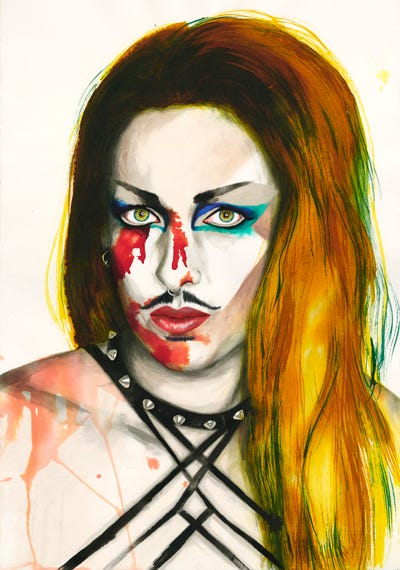
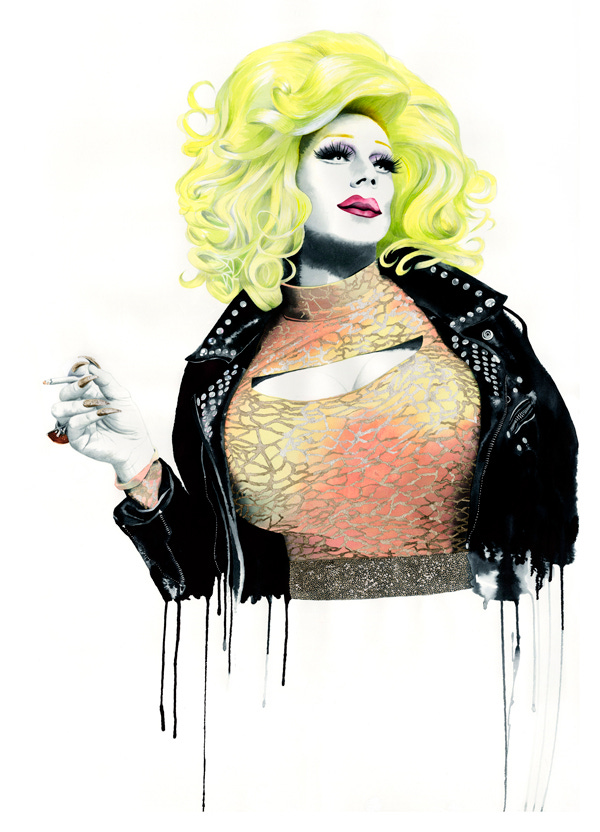
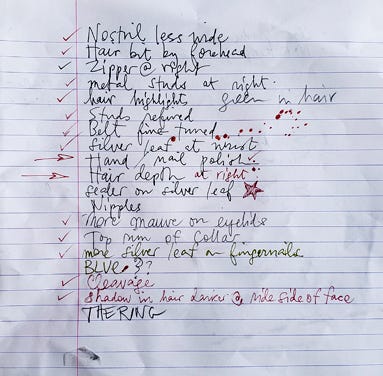
By the time I painted the portrait of Jimbo I’d started work on Life’s Work and I didn’t feel so frustrated by portrait painting, I think by virtue of the fact I was finally moving on to something else. I fully enjoyed painting Jimbo. Not long after, I painted the first of the blue-face paintings of my Mom (below), where I attained something close to the balance I sought between looseness and control.
I became even looser during the course of working on Life’s Work: A Visual Memoir: you can read about it in a post called No Thinking Allowed if you’re so inclined. And now I haven’t painted at all for many months! (insert maniacal laughter). I guess that’ll be another post entirely… LOL
Addendum: Some of these paintings can be made into giclée prints, for those who might be interested. You can hit “reply” at the end of this email, or contact me through my website here.
Bye! Thanks for reading. I’d be honoured if you’d consider supporting me and my work by becoming a paid or free subscriber:
Or please like this, share it, or make a comment—that helps support my work, too. Go on, take a chance—CLICK A HEART WHY DON’T YOU?
Listen to my interview with Sheryl MacKay on CBC’s NxNW here (starts ten minutes in). It’s all about Life’s Work: A Visual Memoir
Buy my Collage Class (a one-hour prerecorded download)
Buy my book 100 Days of The Artist is Present
Visit balampman.com
There's always Instagram

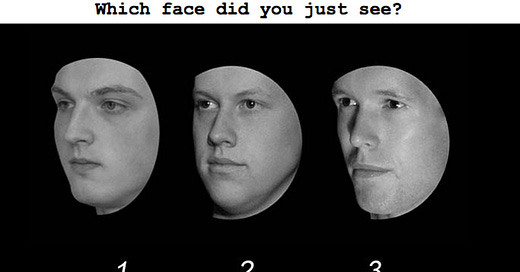




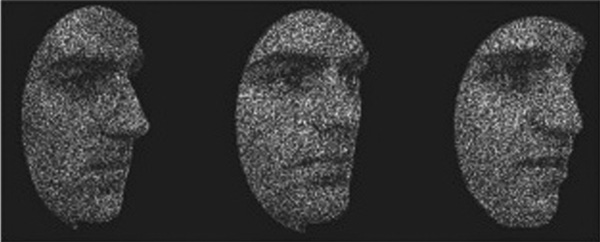

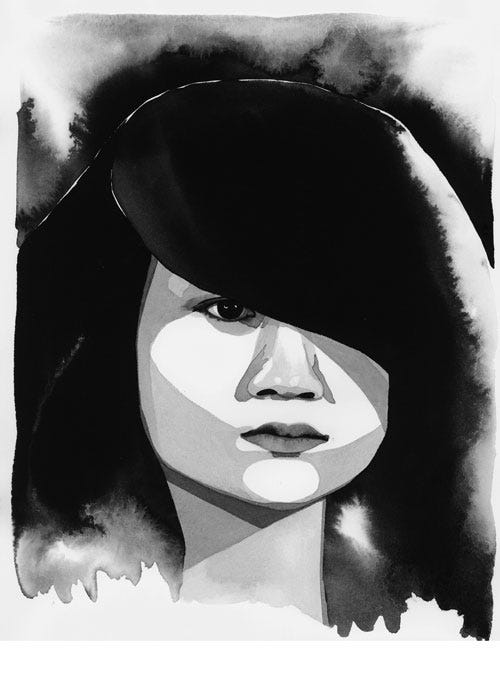

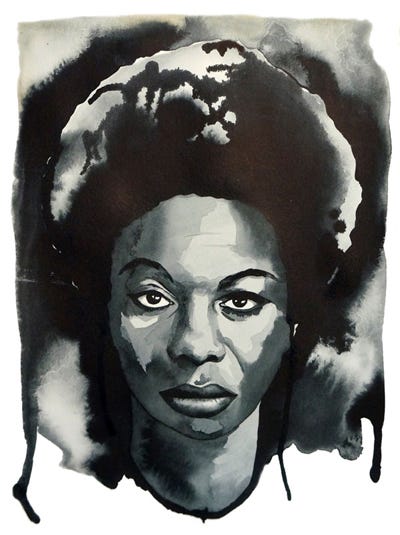
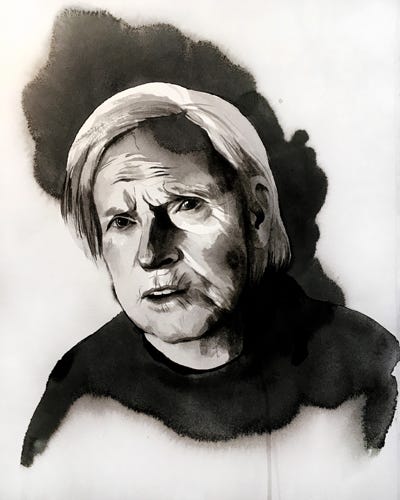
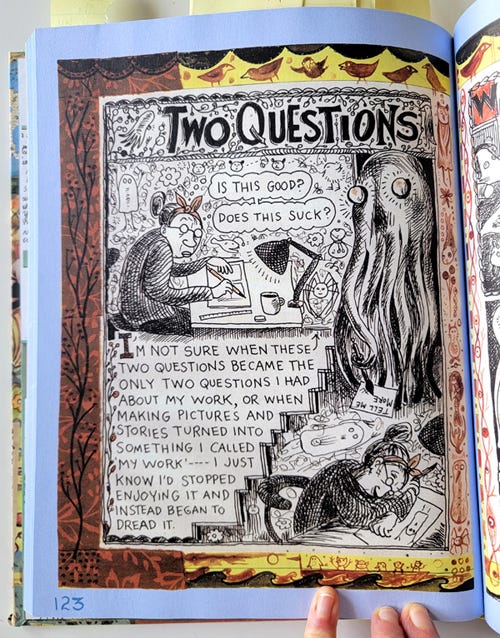
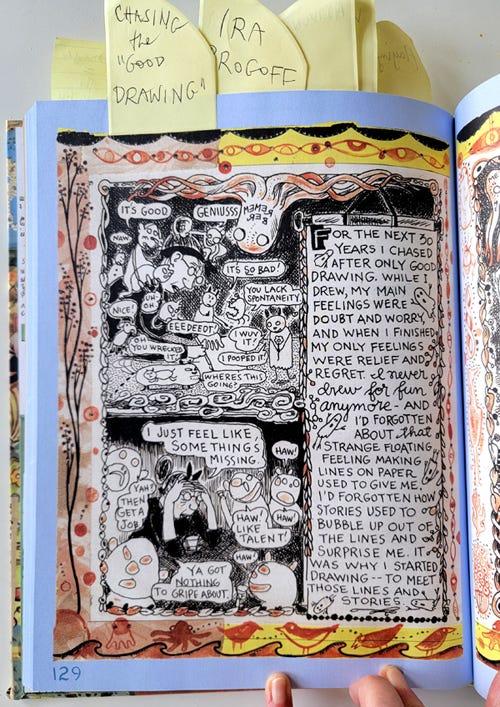
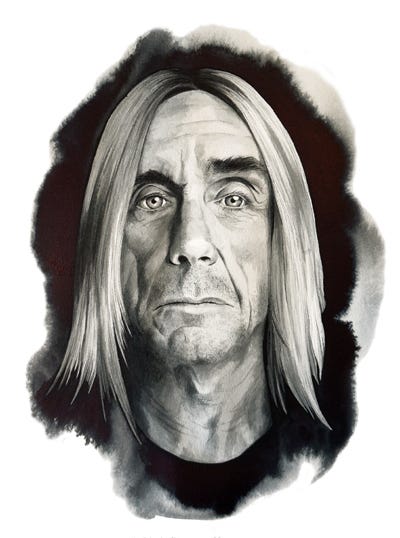
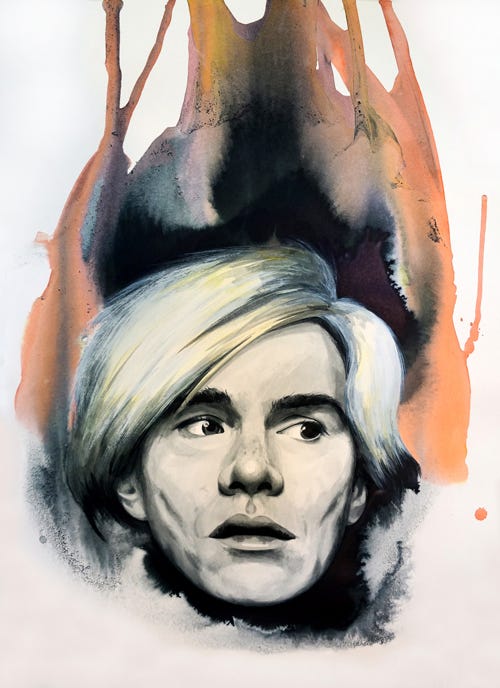
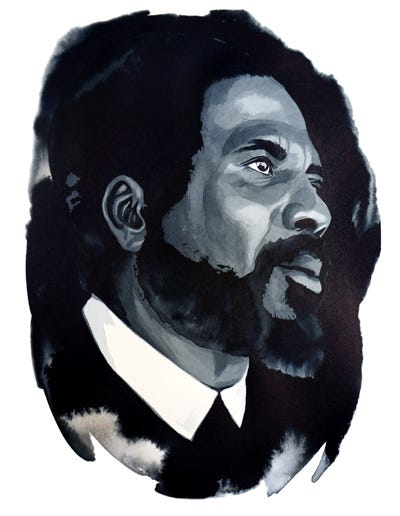
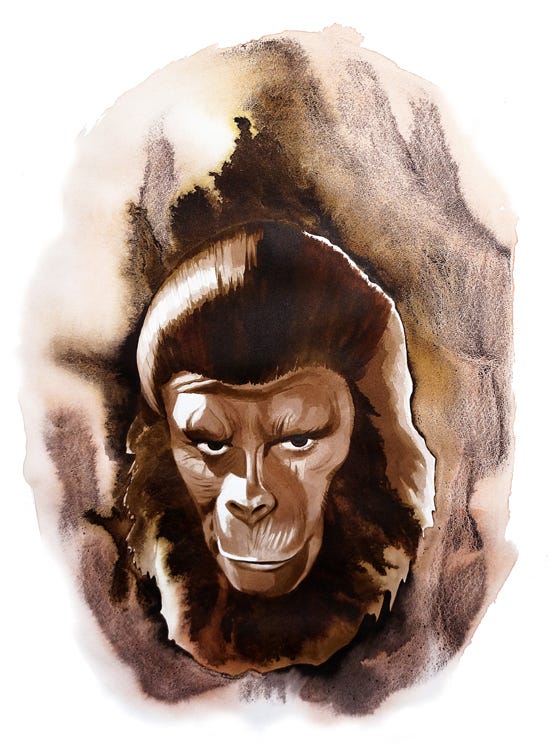
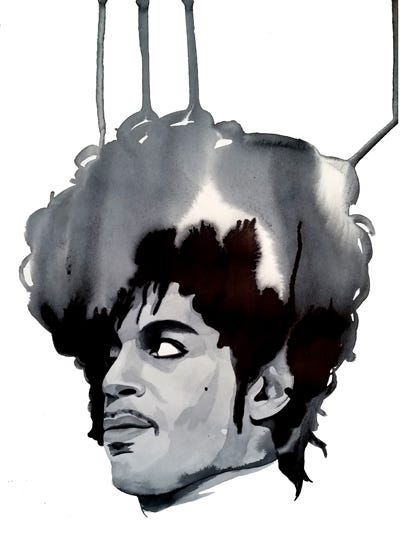
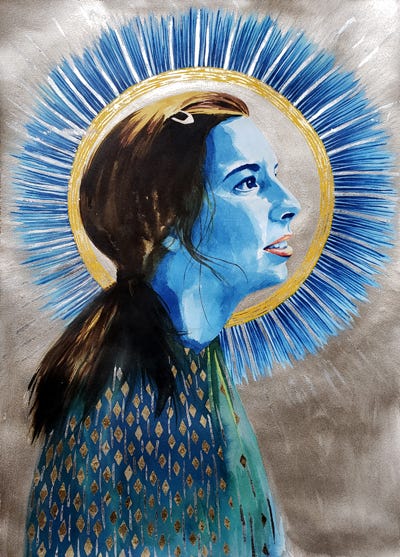

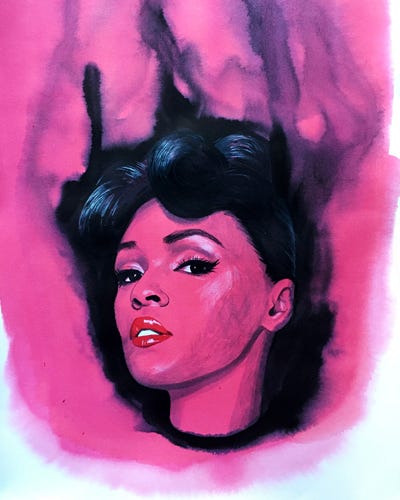
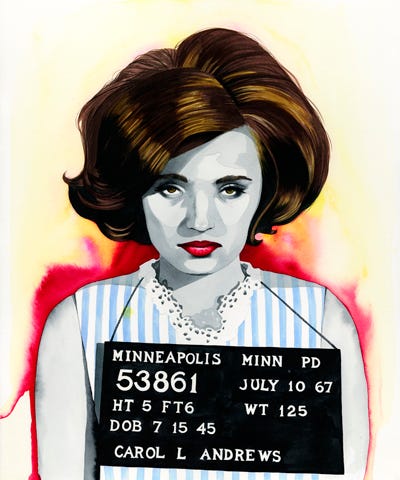
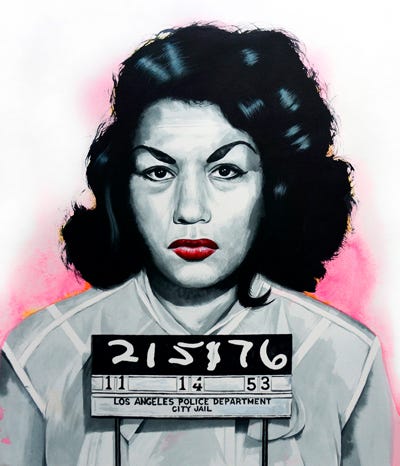
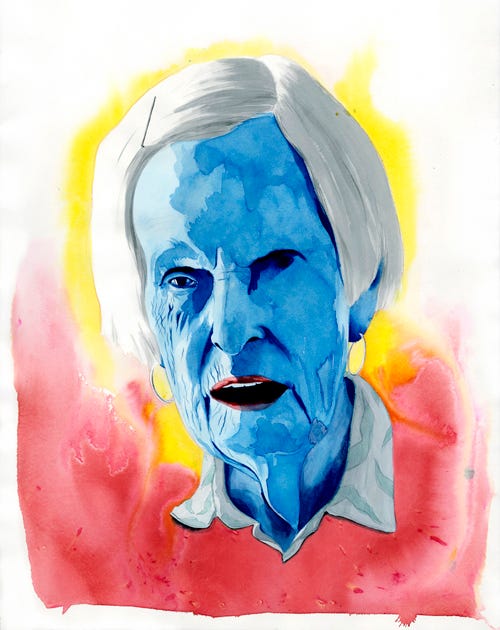


Always love reading your writing and so honoured to be painted by you!
OK, I finally need to read WHAT IT IS! Others have recommended it but somehow I have never gotten around to it. That "Two Questions" page! "It me," as the kids say...
(PS — Got a 94% on the Cambridge test!)